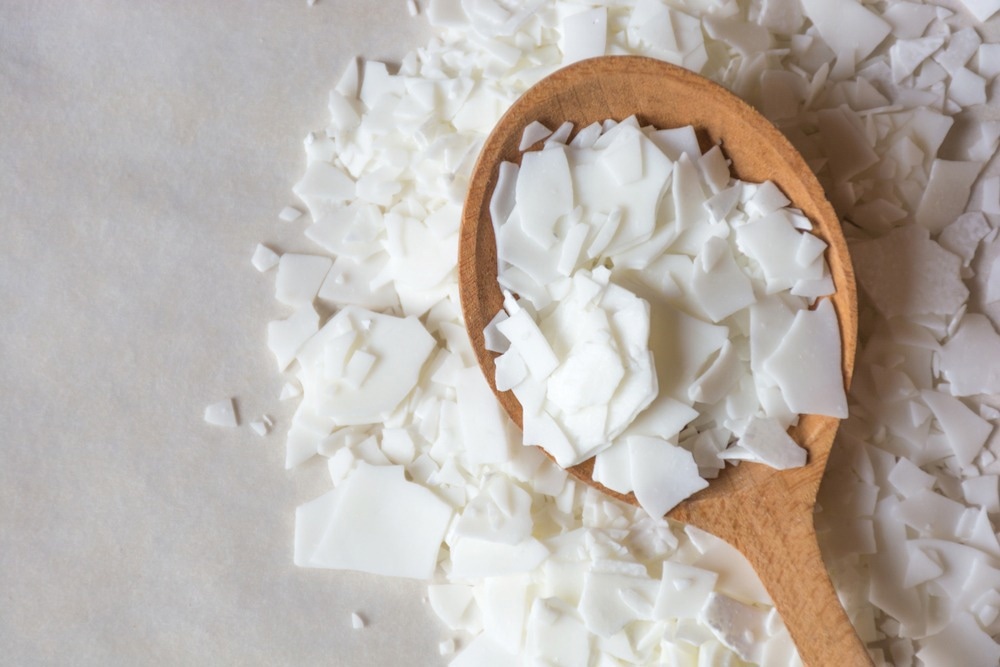Developing sophisticated photovoltaic thermal (PV/T) systems is a major step in utilizing sunlight to generate heat and electricity.

Study: Modified Nano-Fe2O3-Paraffin Wax for Efficient Photovoltaic/Thermal System in Severe Weather Conditions. Image Credit: Nataliia Trytenichenko/Shutterstock.com
In a study published in the journal Sustainability, different concentrations of nanoscale ferric oxide (Fe2O3) were incorporated in paraffin wax to analyze the improvement in thermal conductivity of the paraffin wax and its thermal stability.
How Can Solar Power Be Stored?
The solar energy obtained from the sun is sufficient to fulfill the world’s energy requirements, and unlike fossil fuels, it will not run out anytime soon.
There are different ways to store solar energy when there is no sunlight. The most popular techniques are thermal and electrical storage.
Thermal energy harvested from photovoltaic panels may be stored either through thermophysical reactions that utilize phase change materials or temperature changes or through chemical processes.
Proper thermal management of photovoltaic systems is essential to keep these photovoltaic systems functioning at their peak efficiencies.
The Working of Phase Change Materials
When phase change materials (PCMs) transition from solid to liquid phase or from liquid to gas phase, the heat energy is stored in these materials. PCMs generally exhibit a high energy density, storing thermal energy as latent heat.
Heat energy is released or absorbed when a material transitions from one phase to another. Latent heat is preferable over sensible heat as it can store about 5 to 14 times greater heat per unit volume.
A steady temperature is maintained in phase change materials throughout the phase change process.
Therefore, incorporating phase change materials in heat-producing equipment like electronic systems is a key strategy used in the proper thermal management of electronic systems for reliable and safe operation.
Paraffin – The PCM of Choice
Paraffin is a phase change material regarded as one of the best materials for thermal energy storage. This is because of its excellent thermal qualities like high latent heat, good energy density, and a wide range of melting temperatures.
Unfortunately, paraffin exhibits poor thermal diffusivity and, consequently, poor thermal conductivity. Therefore, paraffin lacks adequate heat transmission properties.
The thermal conductivity and stability of paraffin may be enhanced using different methods, including the addition of metallic substances with high thermal conductivity, the inclusion of metal fins or metallic foams, and the dispersion of nanomaterials with good thermal conductivity.
Incorporating Paraffin with Nanomaterials
An effective approach for improving paraffin's thermal conductivity and stability is to disperse appropriate nanoparticles in the paraffin.
The nanoparticles will produce a homogenous mixture with paraffin and increase its thermal conductivity and stability by creating an infiltrated framework.
Technological advances in nano-PCM have shown good promise in thermal energy storage. Numerous different nanoscale materials of various shapes and sizes have been utilized and combined with paraffin to improve the thermal conductivity of paraffin while maintaining good thermal stability.
Nano-Fe2O3 has excellent thermal conductivity, is easily available, and is relatively inexpensive. However, research efforts on nano-Fe2O3 have been few and far between.
Focus of the Study
This study focused on determining the rate of improvement in the thermal conductivity of paraffin with the introduction of nano-Fe2O3.
The researchers also analyzed the stability of the compound to understand if it could be used effectively in photovoltaic thermal systems under adverse weather conditions.
The outcomes of this study could aid in selecting the best combination for photovoltaic thermal applications using nanoscale PCMs.
Main Findings
In this research, the team mixed nano-Fe2O3 in mass fractions of 3%, 2%, 1%, 0.5%, 0% with paraffin. When nano-Fe2O3 was introduced to paraffin, there was a clear rise in the density and viscosity of the PCM.
The introduction of nano-Fe2O3 increased the PCM's thermal conductivity by 86.3%, 77%, 60.5%, and 30% for 3%, 2%, 1%, and 0.5% mass fractions of nano-Fe2O3, respectively.
Increasing the nano-Fe2O3 mass fraction in the paraffin composite lowered the melting point and the phase change period. Moreover, an increase in the mass fraction of nano-Fe2O3 lowered the solidification point and the solidification duration during the solidifying process.
The PCM composite demonstrated good stability when nano-Fe2O3 was introduced in mass fractions of 1% and 0.5%.
Experiments conducted in challenging outdoor conditions revealed that the PCM composite and the water-cooled photovoltaic thermal system might lower the temperature of the photovoltaic panel by approximately 35%. It also raised the system's overall efficiency to 83.4%.
The findings of the research proved the effectiveness of combining nano-Fe2O3 and paraffin in photovoltaic thermal systems for use in severe weather conditions.
Reference
Chaichan, M. T., Mahdi, M. T. et al. (2022). Modified Nano-Fe2O3-Paraffin Wax for Efficient Photovoltaic/Thermal System in Severe Weather Conditions. Sustainability, 14. Available at: https://www.mdpi.com/2071-1050/14/19/12015
Disclaimer: The views expressed here are those of the author expressed in their private capacity and do not necessarily represent the views of AZoM.com Limited T/A AZoNetwork the owner and operator of this website. This disclaimer forms part of the Terms and conditions of use of this website.